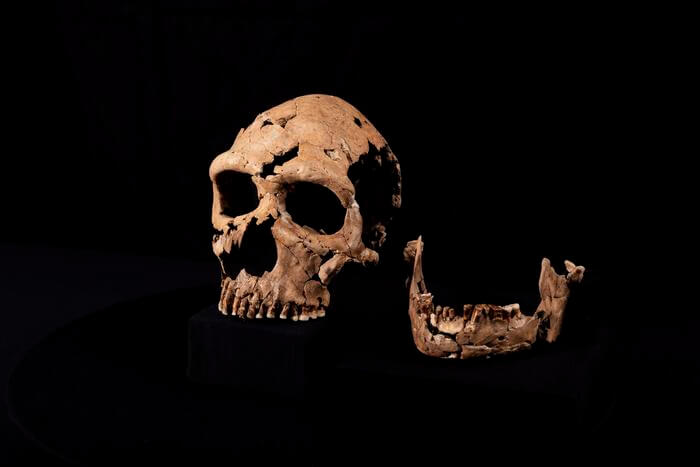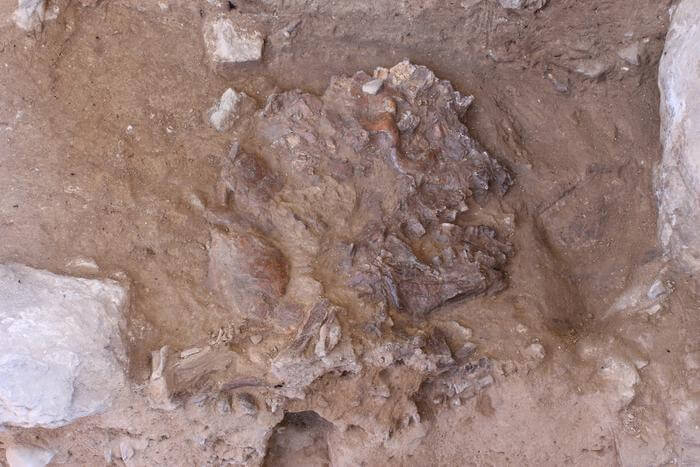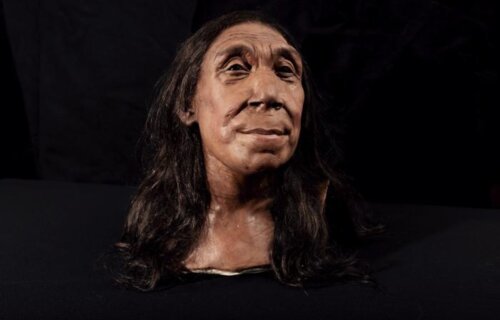CAMBRIDGE, United Kingdom — Neanderthals have long been perceived as primitive brutes, but a team of archaeologists and conservators led by the University of Cambridge is challenging that notion. Their incredible research has led to the reconstruction of the face of a 75,000-year-old female Neanderthal. The remarkable feat, chronicled in the new Netflix documentary “Secrets of the Neanderthals,” offers an unprecedented glimpse into the life and death of our evolutionary cousins.
The female Neanderthal’s remains were excavated in 2018 from Shanidar Cave in Iraqi Kurdistan, a site long known for its rich Neanderthal history. The skull, crushed flat by the weight of time and sediment, was painstakingly pieced back together from hundreds of fragments by lead conservator Dr. Lucía López-Polín.
“Each skull fragment is gently cleaned while glue and consolidant are re-added to stabilize the bone, which can be very soft, similar in consistency to a biscuit dunked in tea,” explains Dr. Emma Pomeroy, a paleo-anthropologist from Cambridge’s Department of Archaeology, in a media release. “It’s like a high stakes 3D jigsaw puzzle.”
Once reassembled, the skull was 3D-printed and served as the foundation for a lifelike reconstruction by renowned paleoartists Adrie and Alfons Kennis. The resulting face, built up with layers of muscle and skin, is a far cry from the brutish Neanderthal stereotypes of old.
“The skulls of Neanderthals and humans look very different,” noted Pomeroy. “But the recreated face suggests those differences were not so stark in life. It’s perhaps easier to see how interbreeding occurred between our species, to the extent that almost everyone alive today still has Neanderthal DNA.”

The Neanderthal, dubbed Shanidar Z, is believed to have been an older female, perhaps in her mid-40s — a significant age for the time. Analysis of tooth enamel proteins confirmed her sex, while the level of wear on her teeth, some worn down to the root, hinted at her advanced years. At just five feet tall and with some of the smallest adult arm bones in the Neanderthal fossil record, her stature also points to a female.
Shanidar Z was found in a cluster of bodies, all buried around 75,000 years ago, behind a large rock that may have served as a burial marker. The site has yielded the remains of at least 10 Neanderthals over the years, including several discovered in the late 1950s that appeared to have been buried in succession. One male had a paralyzed arm, deafness, and head trauma that likely left him partially blind, yet he survived for a long time, suggesting he was cared for by his community.
The current team, led by the universities of Cambridge and Liverpool John Moores, returned to Shanidar Cave to build on these earlier findings and uncover new clues about Neanderthal life and death.
“Our discoveries show that the Shanidar Neanderthals may have been thinking about death and its aftermath in ways not so very different from their closest evolutionary cousins – ourselves,” says Professor Graeme Barker from Cambridge’s McDonald Institute for Archaeological Research.
Indeed, the team found evidence that Shanidar Z was carefully laid to rest in a hand-dug gully, her head cushioned by a rock and her left hand curled beneath her face. Microscopic traces of charred food in the soil around the body cluster suggest that the Neanderthals were cooking and eating in the presence of their dead.
“For these Neanderthals, there does not appear to be that clear separation between life and death,” Pomeroy observed.

The repeated use of the cave for burials over potentially thousands of years also hints at a level of intentionality and connection to place.
“We can see that Neanderthals are coming back to one particular spot to bury their dead,” Pomeroy adds. “Is it just a coincidence, or is it intentional, and if so what brings them back?”
As an older female, Shanidar Z would have been a repository of knowledge for her group, a matriarch whose wisdom was valued.
“Here we are seventy-five thousand years later,” Pomeroy mused, “learning from her still.”
The reconstruction of Shanidar Z’s face and the insights gained from her burial are part of a growing body of evidence that Neanderthals were far more sophisticated than once believed. Rather than simple-minded cavemen, they were a complex species capable of empathy, care, and perhaps even mourning. In death, this Neanderthal woman has given us a new window into their lives and, in doing so, has shed light on our own shared humanity.
